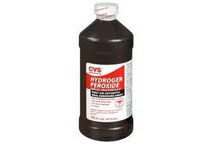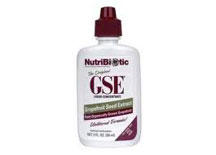6 Ways to REALLY Clean That Cutting Board!
By Alice Osborne
 The cutting board is one of the most used and most abused tools in the kitchen. If we're not careful, it can be the carrier of food-born pathogens, as well. Knowing this, I got excited when I found an article in an old Reader's Digest I was thumbing through at our local thrift store. It was all about clever solutions for cleaning and disinfecting our cutting boards. Look at these 6 smart ideas:
The cutting board is one of the most used and most abused tools in the kitchen. If we're not careful, it can be the carrier of food-born pathogens, as well. Knowing this, I got excited when I found an article in an old Reader's Digest I was thumbing through at our local thrift store. It was all about clever solutions for cleaning and disinfecting our cutting boards. Look at these 6 smart ideas:
 1. Baking Soda. Keep the cracks and knife-created slits of your wooden or plastic cutting board clean by occasionally scrubbing it with an old toothbrush using a paste made from 1 tablespoon each baking soda, salt, and water. Rinse thoroughly with hot water.
1. Baking Soda. Keep the cracks and knife-created slits of your wooden or plastic cutting board clean by occasionally scrubbing it with an old toothbrush using a paste made from 1 tablespoon each baking soda, salt, and water. Rinse thoroughly with hot water.
 2. Bleach. Don't even think about using furniture polish or any other household cleaner to clean a butcher block cutting board or countertop. Rather, scrub the surface with a brush dipped in a solution of 1 teaspoon bleach diluted in 2 quarts (2 liters) water.
2. Bleach. Don't even think about using furniture polish or any other household cleaner to clean a butcher block cutting board or countertop. Rather, scrub the surface with a brush dipped in a solution of 1 teaspoon bleach diluted in 2 quarts (2 liters) water.
Scrub in small circles, and be careful not to saturate the wood. Wipe with a slightly damp paper towel, then immediately buff dry with a clean cloth.
 3. Hydrogen Peroxide. Hydrogen peroxide is a surefire bacteria-killer - just the ally you need to fight the proliferation of bacteria on your cutting board, especially after you cut chicken or other meat. To kill the germs on your cutting board, use a paper towel to wipe the board down with vinegar, then use another paper towel to wipe it with hydrogen peroxide. Ordinary 3% peroxide is fine.
3. Hydrogen Peroxide. Hydrogen peroxide is a surefire bacteria-killer - just the ally you need to fight the proliferation of bacteria on your cutting board, especially after you cut chicken or other meat. To kill the germs on your cutting board, use a paper towel to wipe the board down with vinegar, then use another paper towel to wipe it with hydrogen peroxide. Ordinary 3% peroxide is fine.
For those that can't tolerate the smell of bleach, this is a great choice - all the disinfectant punch without the obnoxious odor! And by the way, it's also a super alternative to bleach for the laundry as well.
 4. Lemons. No wonder kitchen cutting boards smell! After all, you use it to chop onions, crush garlic, cut raw and cooked meat and chicken, and prepare fish. To get rid of the smell and help sanitize the cutting board, rub it all over with the cut side of half a lemon or wash it in undiluted juice straight from the bottle.
4. Lemons. No wonder kitchen cutting boards smell! After all, you use it to chop onions, crush garlic, cut raw and cooked meat and chicken, and prepare fish. To get rid of the smell and help sanitize the cutting board, rub it all over with the cut side of half a lemon or wash it in undiluted juice straight from the bottle.
 5. Salt. After you wash cutting boards and breadboards with soap and water, rub them with a damp cloth dipped in salt. The boards will be lighter and brighter in color.
5. Salt. After you wash cutting boards and breadboards with soap and water, rub them with a damp cloth dipped in salt. The boards will be lighter and brighter in color.
 6. Vinegar. To disinfect and clean your wood cutting boards or butcher block countertop, wipe them with full-strength white vinegar after each use. The acetic acid in the vinegar is a good disinfectant, effective against such harmful bugs as E. coli, Salmonella, and Staphylococcus.
6. Vinegar. To disinfect and clean your wood cutting boards or butcher block countertop, wipe them with full-strength white vinegar after each use. The acetic acid in the vinegar is a good disinfectant, effective against such harmful bugs as E. coli, Salmonella, and Staphylococcus.
Never use water and dishwashing detergent, because it can weaken surface wood fibers. When your wooden cutting surface needs deodorizing as well as disinfecting, spread some baking soda over it and then spray on undiluted white vinegar. Let it foam and bubble for five to ten minutes, then rinse with a cloth dipped in clean cold water.
And now a bonus tip from moi:
 7. Make a solution of 20 drops of GSE (grapefruit seed extract), 1 capful of white vinegar, and water to fill a 1 quart spray bottle. After your cutting board has been wiped clean of all food particles and leftover residue from cutting/chopping, spray this solution and let sit until dry. Your board is now super sterilized and ready for the next chop-chop session.
7. Make a solution of 20 drops of GSE (grapefruit seed extract), 1 capful of white vinegar, and water to fill a 1 quart spray bottle. After your cutting board has been wiped clean of all food particles and leftover residue from cutting/chopping, spray this solution and let sit until dry. Your board is now super sterilized and ready for the next chop-chop session.

